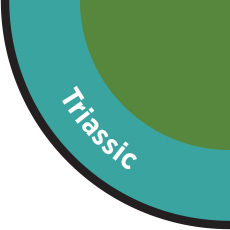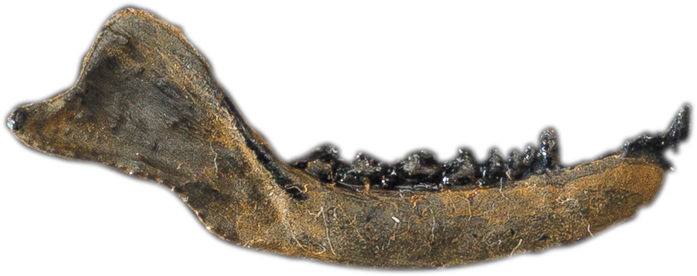

Life rebounded in a riot of evolution during the Triassic Period. Perhaps no time since the Cambrian had seen such swift shifts in animal diversity, including the first appearance of frogs, turtles, and mammals, plus flying pterosaurs and land-dwelling dinosaurs. Nearly all main groups of living terrestrial tetrapods evolved in this period. Reptiles—minor players in the Permian—now were the most numerous kinds of new large animals, and they lived on land and in the water and sky, rapidly diversifying into new habitats and roles in a Triassic world without polar ice caps, where most places were hot and dry or warm and wet. By the Late Triassic, dinosaurs were still a reptilian minority, but some had already grown quite big.

Semiaquatic ambush predators like Smilosuchus gregorii, shown in the mural, terrorized Triassic landscapes. This phytosaur looked and lived like a modern crocodile but had nostrils between its eyes, not at the tip of its snout.

Triassic turtles like Proterochersis robusta evolved unique, bony-shelled bodies.

Changes to jaws, teeth, and skulls set mammals on their course in the Late Triassic. This jaw belonged to Haramiyavia clemmenseni, which may have been one of the first mammals.

One of the first “flying” vertebrates was this lizardlike glider, Icarosaurus siefkeri.

The first dinosaurs appeared about 230 million years ago. The bipedal omnivore Eoraptor lunensis, found in Argentina, is one of the oldest known.